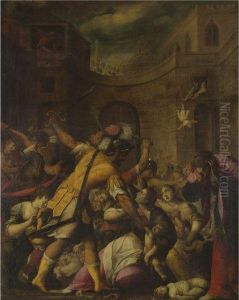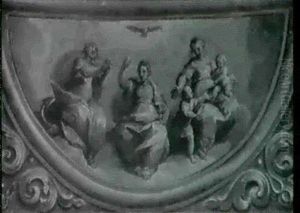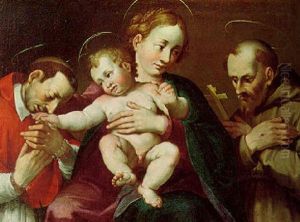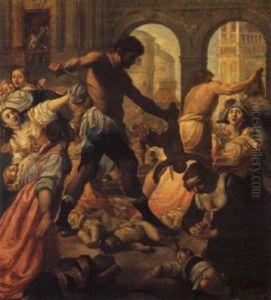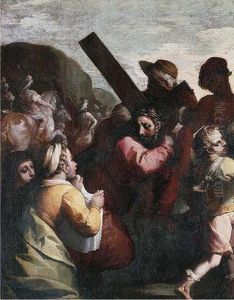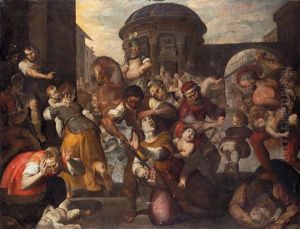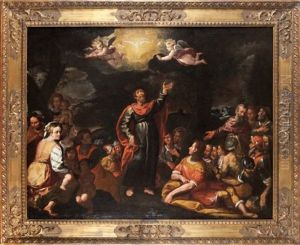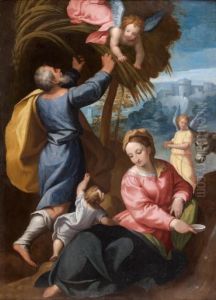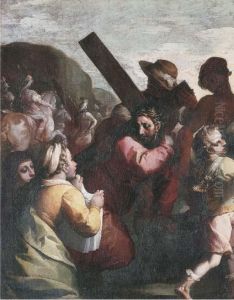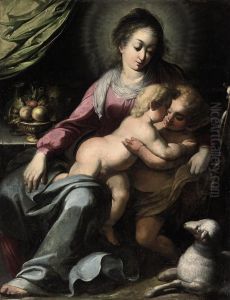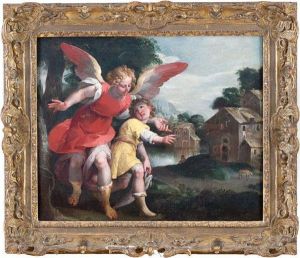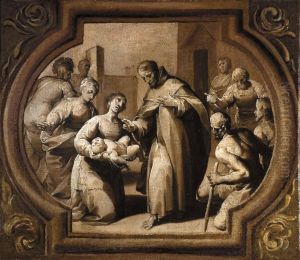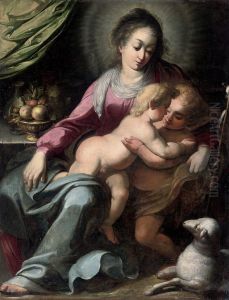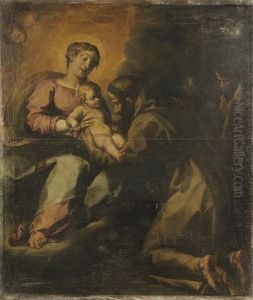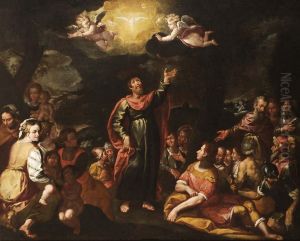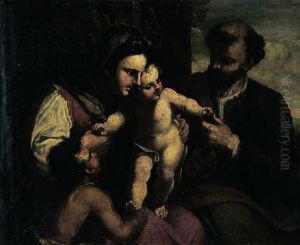Simone Barabino Paintings
Simone Barabino was an Italian painter born in Genoa in 1585. He was active during the late Renaissance period, contributing to the transition into the early Baroque style. Barabino's work is characterized by his vivid use of color and dynamic compositions, which were innovative for his time and influenced by his contemporaries in the Genoese School. Despite the limited documentation on his life, it is known that he was deeply involved in the artistic community of Genoa, which was a significant cultural hub during the 16th and 17th centuries. His training and early influences are not thoroughly documented, but it is speculated that he was connected to or influenced by more prominent Genoese artists such as Luca Cambiaso and Giovanni Battista Paggi. These connections would have provided him with the foundations of his style, which combined the Mannerist tradition with emerging Baroque elements. Barabino's religious and mythological scenes are particularly noted for their emotional intensity and intricate detail. Unfortunately, Barabino's career was relatively short-lived. He died in 1627, at the age of 42. Despite his early death, he left behind a significant body of work that continued to influence the Genoese and Italian art scenes. His paintings are preserved in various churches and collections in Genoa and other parts of Italy, serving as testaments to his skill and artistic vision. Although not as widely recognized as some of his contemporaries, Simone Barabino remains an important figure in the study of late Renaissance and early Baroque art, offering insights into the transition between these two pivotal artistic periods.
